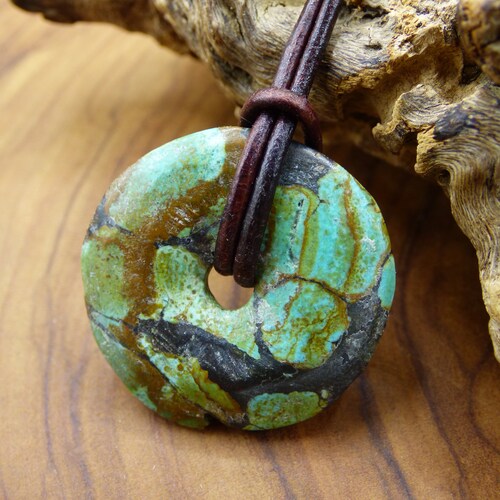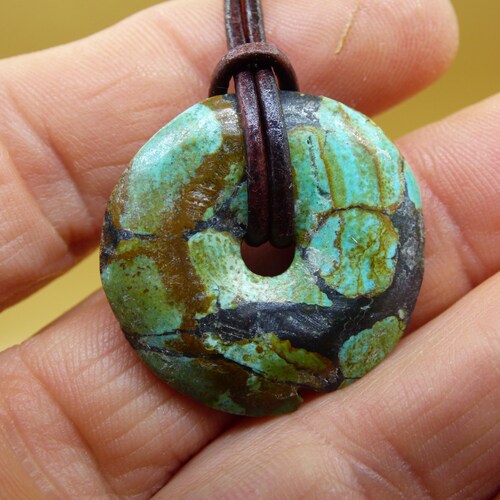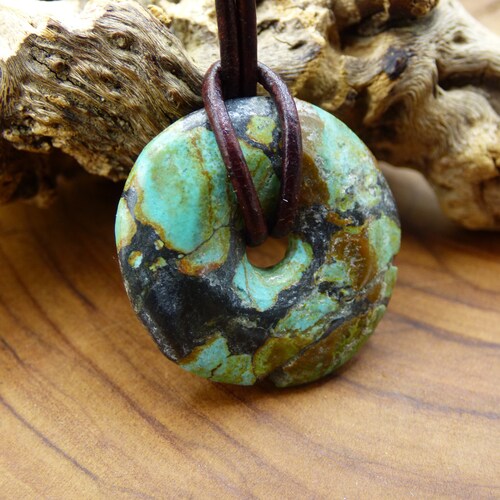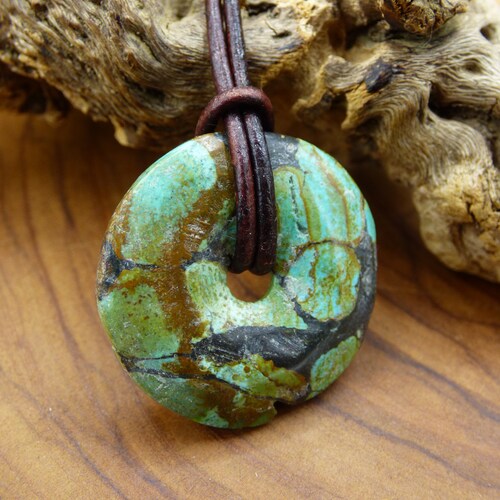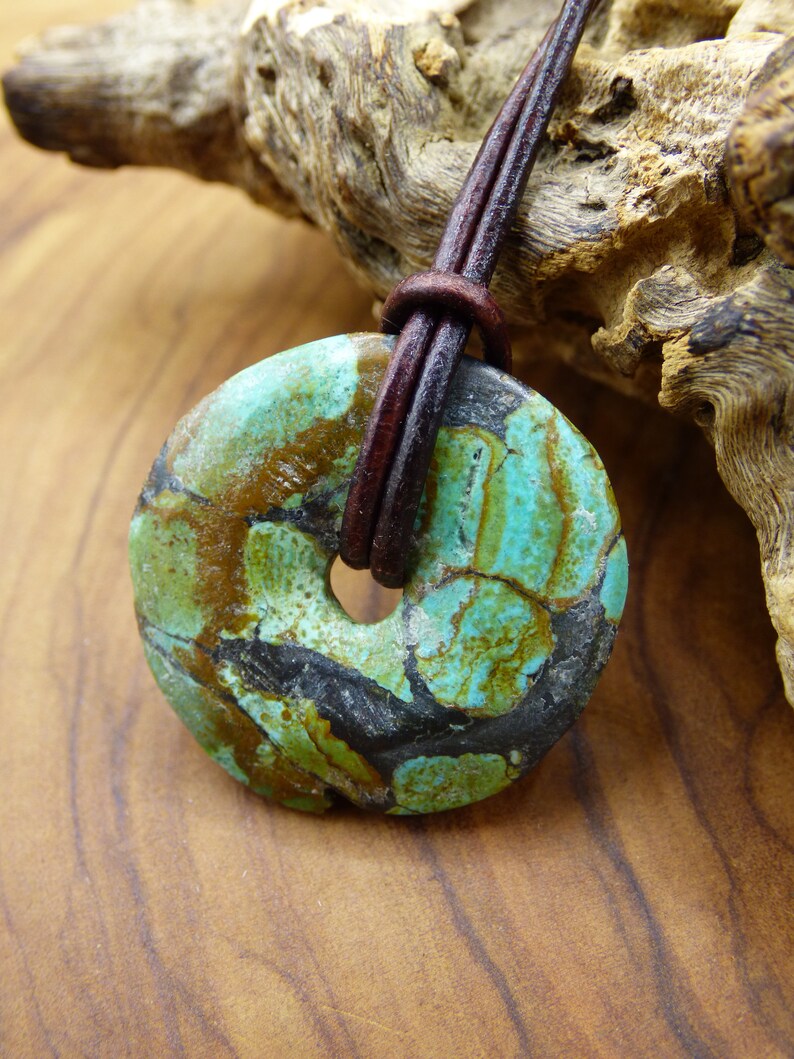Turquoise 100% natural ~ Gemstone Necklace ~HIPPIE ~GOA ~Boho ~Tibet ~Ethno ~Nature ~Donut ~Protective Symbol on sale ~Healing Stone ~Rarity
Gemstone necklace with a turquoise donut ~ A very rare rarity, in a donut shape to get a real turquoise is very difficult, as the material is usually very brittle and rarely donuts are cut.
Incl. 1.5 mm leather strap in antique brown.
Size: 26 x 6 mm
Origin: Arizona (USA)
Indians worship turquoise as a strong protective stone, as it connects both the unearthly sky and the earthly water, the lake, in their worldview due to its colors. It is also considered a warning stone, because in case of danger or stress it discolors or becomes porous. Therefore, it is important to clean the turquoise often energetically and thus stabilize it. Silver supports the healing effect, which is why the turquoise is often processed into silver jewelry. Our silver Mala coin also increases the gemstone effect in your turquoise Mala.
Turquoise zodiac sign: Aquarius, Pisces
Turquoise Chakra: Throat Chakra
Turquoise effect and meaning for your life:
With a turquoise you can strengthen your self-confidence as an introverted person. He supports you in conversations so that you can assert yourself and successfully conduct negotiations. The turquoise is a powerful protective stone. In addition, it has a positive effect on friendships, allows them to last a long time and ensures consistent success, also in financial terms.
Turquoise
The most popular stone associated with Native American silver jewelry is turquoise. This radiant stone is one of the main features of the well-known Navajo silver jewelry. Most often decorated in a "bed" of silver with various ornaments, the turquoise sits in the middle of the jewel. In the jewelry of the Zuni Indians, it is usually combined with other stones, as well as with various shells. Basically, it is one of the most important stones of the Indians in the southwest.
The colors of this wonderful semi-precious stone vary from a deep blue to greenish blue to a clear light blue reminiscent of a cloudless sky. The coloration varies from a clear, unclouded color, to stones interspersed with dark matrix to the rare and popular spiderweb turquoise (spider web turquoise).
Turquoise is a powerful protective stone against negative influences, as well as against all environmental toxins. It is also worn as a lucky stone to stimulate love and good thoughts. Among the Indians of the Southwest, it is considered a "gift of the gods" and is associated with horses that find water in the desert. In the Indian legends, it often appears as a special gift of the Great Spirit to the people, who basically has very high healing powers. It is also said that the wearer's turquoise breaks in case he has had an accident and nothing has happened to him.
Turquoise also belongs to the sacred stones of the Indians. They believed that turquoise established a direct connection from heaven to souls. The Indians on sale worshipped it as a protective stone and believed that turquoise unfolded its powers, especially in combination with red coral. This can still be seen today in the typical Indian jewelry.
Silver, turquoise and red coral are combined by the Indians to fantastic pieces of jewelry and lucky charms. In Europe, turquoise was known earlier. The Egyptians and the Greeks worshipped this stone as a gemstone. Not only grave goods were often made of turquoise, but also many jewelry and cultural objects. It has the warning quality that it discolors in the event of serious illnesses or approaching strokes of fate and is therefore a tireless warning and protective stone. The name turquoise probably comes from the Greek, which means "Turkish stone". Presumably, the first turquoises came from Turkey to Europe.
We hope you enjoy browsing through our shop, if you like what you see, we would be very happy if you would follow us here :)
"A stone is the condensed history of the universe"
~Art of Nature Berlin~
